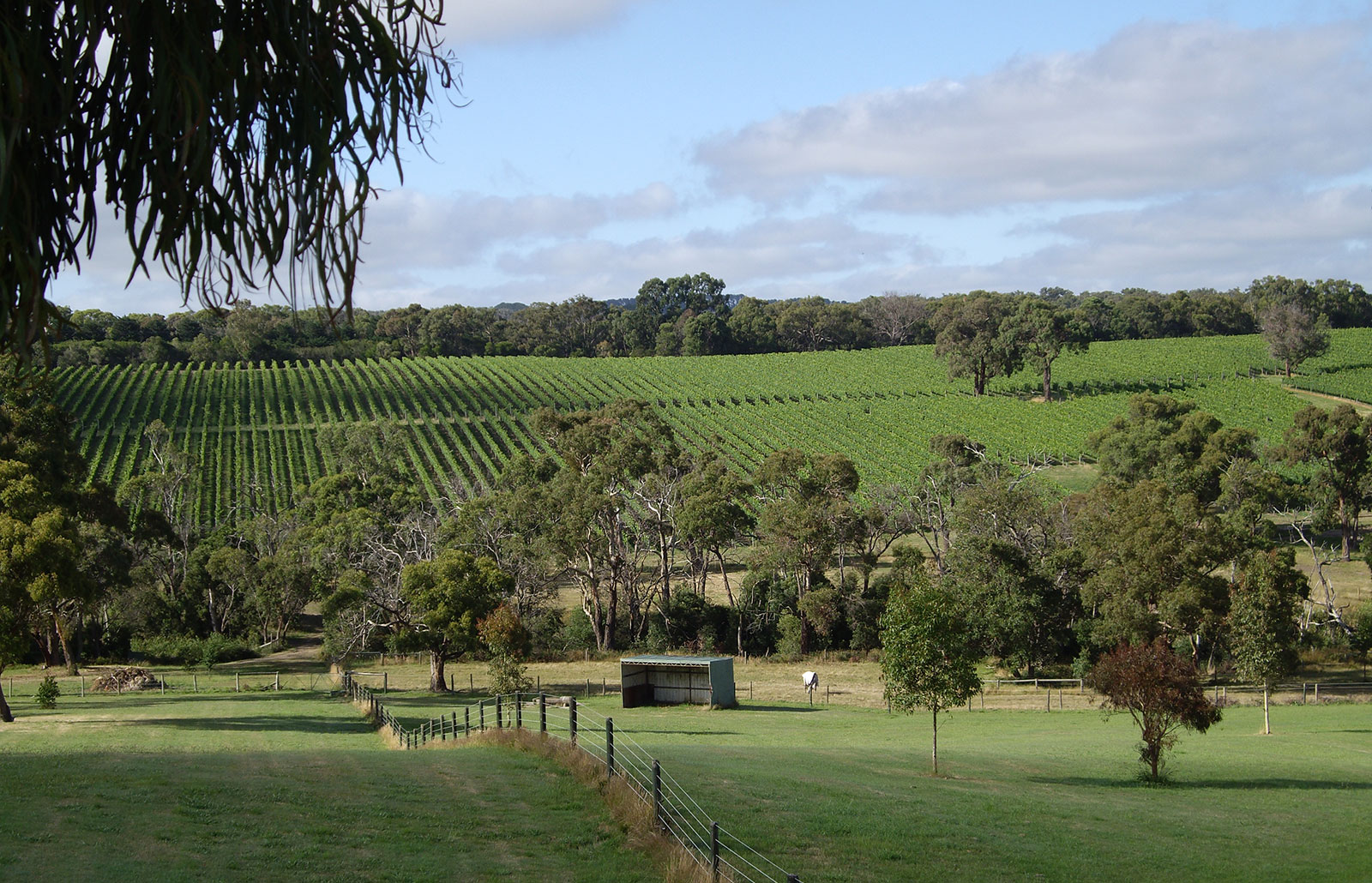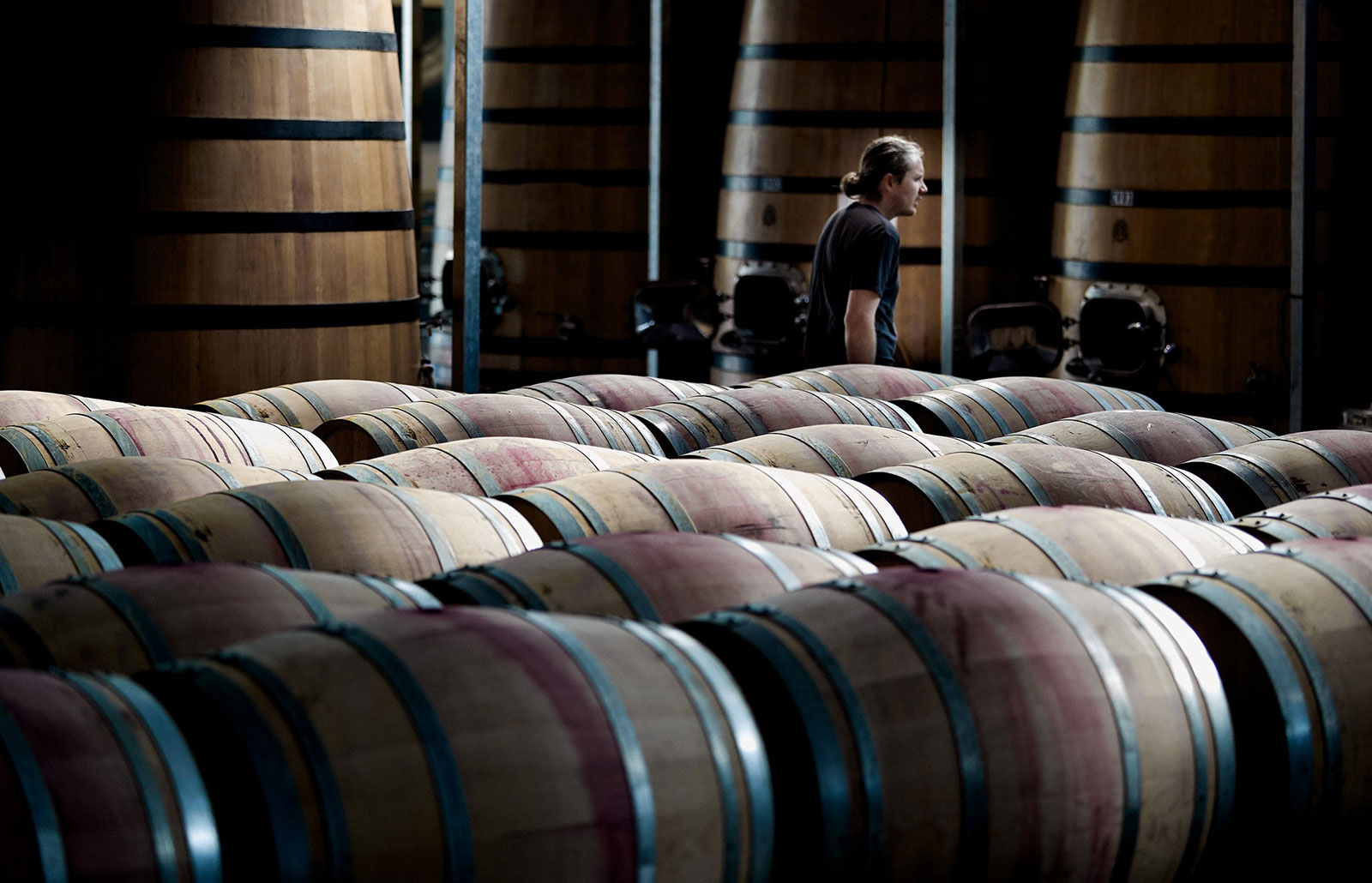REGION

The Mornington Peninsula is a special place where vines thrive in sheltered undulating valleys nurtured by a maritime cool climate creating elegant, personality-packed award-winning wines - predominantly Pinot Noir and Chardonnay with Pinot Grigio and Shiraz a smaller presence. Vineyards planted in the 1970s started the current era and are celebrated through stories told by our founding vignerons.
What's the Mornington Peninsula's signature wine? It is supple & alluring, coaxing elegant and delicate varietal characters from the locally grown Pinot Noir. Appropriately, the region's wines show great finesse but don't be fooled by any apparent delicacy, as these wines are packed full of intensity, structure & texture.
Walk pristine beaches and spectacular cliff tops, catch a wave, paddle a sea kayak, tackle the fairway at Cape Schanck, or sip a seductive Pinot Noir and feel the difference when you visit the Mornington Peninsula.
Less than an hour's drive south-east of Melbourne, the region now hosts 200 small-scale vineyards and more than 50 cellar doors offering visitors a personal warm welcome and taste of the region's diverse and impressive collection of fine wines. Mornington Peninsula wineries are supported by exceptional, and an increasing variety, of restaurants, bistros and cafes.
2024 Vintage Report
The 2024 vintage began with a relatively benign season from September to November, characterised by stable weather and persistent cloud cover, which moderated evening temperatures. However, December and January presented significant challenges with heavy rainfall, reaching up to 70mm, during the critical two-week flowering period. Vineyards situated downhill fared better initially, while those uphill faced a tough season marked by wet and humid conditions, leading to widespread downy mildew and unusually, small patches of bacterial inflorescence necrosis.
Particularly, vineyards at higher elevations around Main Ridge suffered significant yield losses due to these compounding pressures. However, regions like Tuerong, Balnarring, Moorooduc, and lower, more northerly vineyards managed to maintain good yields and concentration. Following the challenging period in December and January, there was a seven-week stretch without rain, commencing at veraison.
Despite the heat events, which accelerated ripening and compressed the vintage into a shorter, more intense period, little crop damage was reported. This pressure to expedite harvest contributed to exceptional color, intensity, and pleasing flavor profiles. Harvest occurred approximately two weeks earlier than usual, around February 16th, compared to the typical start date of March 1st. Chardonnay is looking especially smart with pinot noir adding layers and complexity to the vintage. Other red varietals are progressing at their usual pace, with expectations of being in tanks by mid-April.
Overall, wineries with vineyards spread across the region experienced mitigated risk, highlighting the importance of diversification in managing vintage and climate challenges.
HISTORY

The Mornington Peninsula Wine Region Wine production on the Peninsula dates back to 1886, when Dromana wine won an honourable mention in the Intercontinental Exhibition. In 1891, fourteen Peninsula grape growers were mentioned in a Royal Commission into the Fruit and Vegetable Industry. In the 1920s, many of the Mornington Peninsula’s vineyards were abandoned or uprooted. In the 1950s, Seppelt and Seabrook operated a vineyard in Dromana, but this was destroyed by fire in 1967.
The renaissance of the region’s wine industry began in 1972 when a number of aspiring vignerons independently recognised the potential of the unique maritime climate of the Mornington Peninsula for producing high quality cool climate varieties, similar to those of the great wine producing regions of France.
The maritime influence provides relatively high summer humidity and rainfall. The coincidence of late ripening and a prolonged gentle autumn, result in fully ripe grapes with outstanding fruit flavours, high natural acidity and fine tannins.
The main grape varieties grown in the Region are Pinot Noir and Chardonnay. Pinot Noir is the dominant variety, comprising half of total plantings – the Mornington Peninsula has over 9% of Australia’s total Pinot Noir plantings; the third largest Pinot Noir wine region. Some of the more innovative plantings include Pinot Gris and Shiraz.
Today, there are over 200 vineyards and plantings have steadied at around 1,100 hectares. Vineyards of 10 or more hectares are more dominant than was the case a decade ago. The Region also boasts over 50 wineries with cellar doors. The Mornington Peninsula Wine Region continues to develop and is rapidly becoming recognized as Australia’s leading producer of high quality maritime, cool climate wines and in particular Pinot Noir.
A Dilligent Record
Beginning from the early 1980s, Margaret Crittenden (of Crittenden Estate) collected any press clipping she would encounter that involved the Mornington Peninsula Wine Industry, cutting and pasting into a scrap book and 27 years later had filled five large books, which witness the progression on the industry from a media perspective. In recent years, husband Garry Crittenden resurrected these clippings and collated them into a publishable book, donating a copy to each of the Peninsula libraries along with the local Historical Society, which you can see here.


